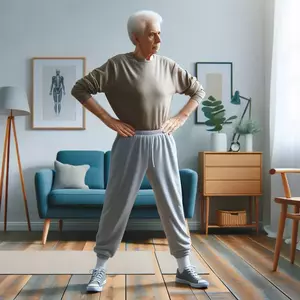Stretching Exercises for Seniors with Limited Mobility
Key points
- Ultimate guide to stretching for seniors with limited mobility.
- Covers science, types of stretches, and precautions.
- Includes essential equipment with a link to a specialized guide.
- Variety of chair, floor, and standing exercises.
- Backed by scientific studies for credibility.
Hey there, folks! Are you or a loved one struggling with limited mobility? You’ve landed in the right spot.
This article is your ultimate guide to stretching exercises designed specifically for seniors with limited mobility.
How Stretching Affects Seniors with Limited Mobility
These studies provide a strong foundation for the benefits of stretching, especially for seniors with limited mobility. So, the next time you stretch, know that you’re doing something scientifically proven to help!
Precautions Before Starting
Before you jump into your stretchy pants, let’s talk safety.
- Medical Clearance: Always consult your healthcare provider.
- Warm-up: A light warm-up can prepare your body.
- Knowing Your Limits: Don’t push too hard; listen to your body.
Equipment Needed
Stretching doesn’t require a ton of fancy equipment, but having a few essentials can make your experience more effective and comfortable. Here’s what you might consider adding to your stretching arsenal:
- Resistance Bands
- Yoga Mats
- Chairs
- Foam Rollers
If you’re looking to invest in quality stretching equipment, don’t miss our comprehensive guide on the best stretching equipment for home. This guide will help you choose the right tools to enhance your stretching routine.
Having the right equipment can make a world of difference in your stretching routine. It not only makes the exercises more effective but also adds an extra layer of safety. So gear up and stretch on!
Stretches for Seniors with Limited Mobility
Chair Exercises
Chair exercises are the bread and butter for seniors with limited mobility.
- Closed Fists, Extended Hands: Great for wrist mobility.
- Knee Marches: Excellent for lower body.
- Torso Twist: Good for your core.
Chair Exercises for Seniors with Pictures
Need visuals? We’ve got a detailed guide with pictures.
Floor Exercises
If you can get down to the floor, these are for you.
- Gentle Backbends: Good for your spine.
- Leg Lifts: Works on your thighs and hips.
- Arm Circles: Great for shoulder mobility.
Standing Exercises
For those who can stand but not move much.
- Calf Raises: Excellent for leg strength.
- Side Stretches: Works on your obliques.
- Core Twists: Good for your midsection.
Stretching for Specific Body Parts
Sometimes, you need to focus on specific areas.
Advanced Techniques
Feeling adventurous? Try these.
- PNF Stretching: A combo of stretching and contracting.
- Yoga Poses: Some basic poses can be beneficial.
Stretching Routine
Consistency is key, folks! Only with regular stretching you can make a difference in your muscle’s flexibility. Expect to see the results after 6 weeks!
- Morning Routine: Light stretches to start the day.
- Evening Routine: Calming stretches before bed.
FAQs
- How often should seniors stretch?: Daily, if possible.
- Is stretching enough for physical fitness?: It’s a start but should be part of a broader fitness routine.
- How long should I hold a stretch? When doing static stretches, hold for 30s.
- What to do if I experience a pain during stretching? Stop stretching immediately and consult your doctor.

